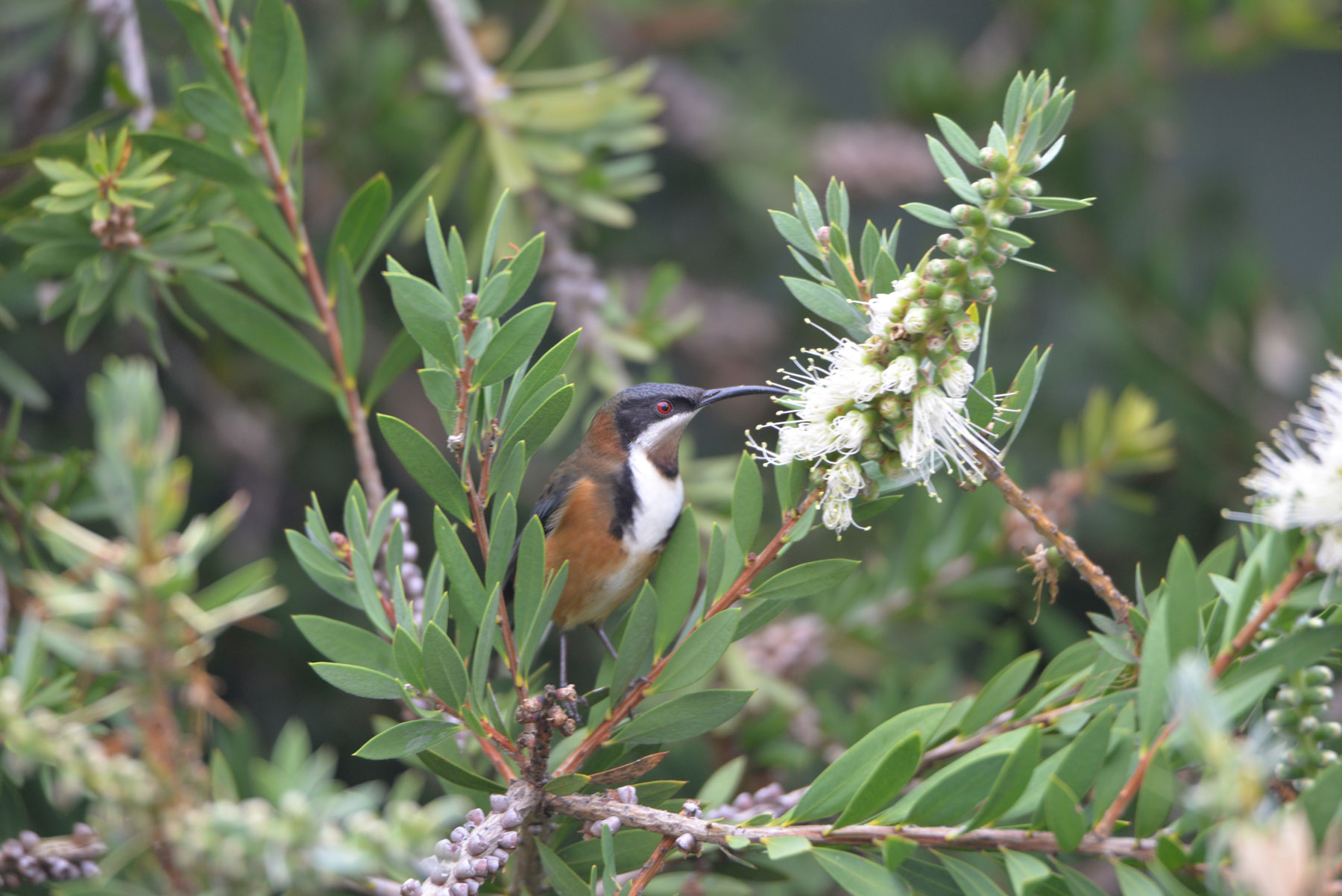By David Thurley
When we plant a garden we are usually thinking of a number of things. Space for our children or grandchildren and pets to play, how to make our house look beautiful, the need for privacy and many other things. But somewhere in there should be what can I plant to provide habitat for the local wildlife; birds, bees, frogs and other creatures like echidnas.
Years ago we transformed our garden from a pretty conventional suburban garden with lawns and perimeter plantings but few trees and bushes. The majority of visitors to our garden were sparrows, blackbirds and noisy miners who, by their aggressive behaviour deterred other smaller species from visiting. We converted the garden into a fully native garden with trees and bushes of various heights, shapes and textures. Low growing bushy shrubs provided protection for small native birds and the trees, once grown to a reasonable height, provide nesting habitat for a range of native birds. The gardens also attracted visitors who, upon inspection, found some unique nesting places in the hanging pots on the rear patio.
Frogs, including Peron’s Tree frog (the maniacal cackling frog) visit us and shelter in the drainage sumps of our hanging baskets, luxuriating in the cool dampness, safe from predators. But a highlight for us has been Striated pardalotes who established a nest in the base of one basket (the plant had to go) and raised 2-3 broods of chicks every year for 7 years. We could hear their cheery call from our living area and watch them as they fed their young. The highlight was to see the new chicks emerge and take wing watched over by their protective parents.
Subsequently we have had Red Wattle birds nesting in one of our taller trees and many others coming to feast off the nectar from our various trees and shrubs. The garden is a hive of activity from the birds and frogs to the bees, both native and European honey bees and the occasional echidna.

